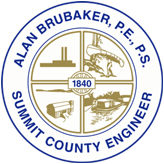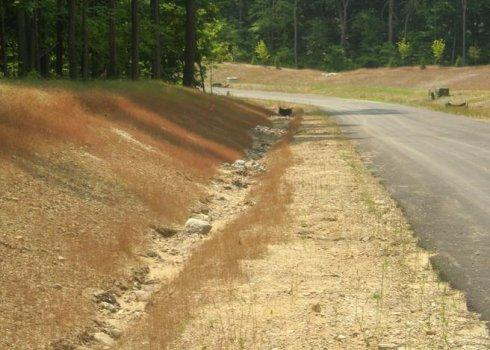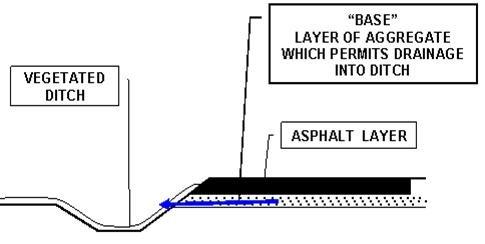Roadside Ditches
The question is often asked, “Why does Summit County prefer open roadside ditches along county roads instead of enclosed pipe drainage systems?” Here are some of the reasons.
Surface Drainage Improved
One of the purposes of a roadway drainage ditch is to prevent unsafe accumulations of rain water on the roadway surface. An open ditch allows water to move fully away from a road surface. In contrast, a piped storm sewer system uses the edge of the roadway surface if there is a curb, or a shallow swale over the former ditch to convey the water until it reaches a catch basin or other point of interception. An open ditch also continuously intercepts rain water flowing toward the roadway from adjacent land. For these reasons, a roadway drainage ditch is less likely to allow accumulation of water on or near a roadway surface than an a storm sewer system.
Roadway Base Drainage
Another purpose of a roadway drainage ditch is to drain water from under the roadway. The base is the foundation for supporting the load of traffic on the asphalt roadway. If water becomes trapped in the base, it weakens the structure of the roadway, leading to premature failure of the roadway. In addition, during cold weather, freezing and thawing of water trapped in the base under the pavement causes rapid deterioration of the pavement. An open ditch of sufficient depth provides continuous drainage of the base.
Flooding Reduced
An open ditch has more capability than a piped system to reduce flooding resulting from heavy rainfall. During an extreme rainfall event, flow in a roadway drainage ditch is usually limited by driveway culverts or water elevations at discharge points, such as intercepting streams. When that happens, each roadway ditch becomes a small detention basin, storing excess water until discharge capacity becomes available. A piped system does not have capability to store excess water. A piped system also accelerates water flow, making downstream flooding conditions worse.
Water Quality Issues Improved
An open ditch helps to maintain healthy water quality in receiving streams:
- Vegetation in a roadway drainage ditch provides valuable filtering of water. Roadways gradually accumulate rubber tire wear, lubricants, metal particles, rust fragments and other substances from the wear and weathering of motor vehicles. These substances, as well as roadway materials loosened by wear and weathering, are washed from roadways by rain water. Ditch vegetation helps to trap these substances, and reduce flow rates, promoting settlement of solid particles and preventing them from entering the natural waterways. Mowing of roadside ditches should be kept to a minimum in order to maximize filtering.
- Ditches reduce flow rates and increase storage of excess rainwater which helps reduce downstream erosion and the impact on stream habitat caused by high concentrations of suspended solids.
- The detection of illicit discharges is easier in open ditches than in closed piped systems. EPA rules require that non-rainwater discharges be eliminated from urban drainage systems. Such discharges include failing septic system discharges and disposal of solvents, motor vehicle fluids, and cleaning products.
Infrastructure Costs Reduced
Piped drainage systems, including storm sewers, catch basins, manholes, headwalls and under drain piping are much more costly to construct than roadside ditches. If a piped drainage system is constructed without adding an adequate under drain system, additional costs are incurred for roadway repair and reconstruction due to roadway deterioration caused by the inadequate base drainage.
- Roadside Drainage Brochure (PDF, 1003.9k)



